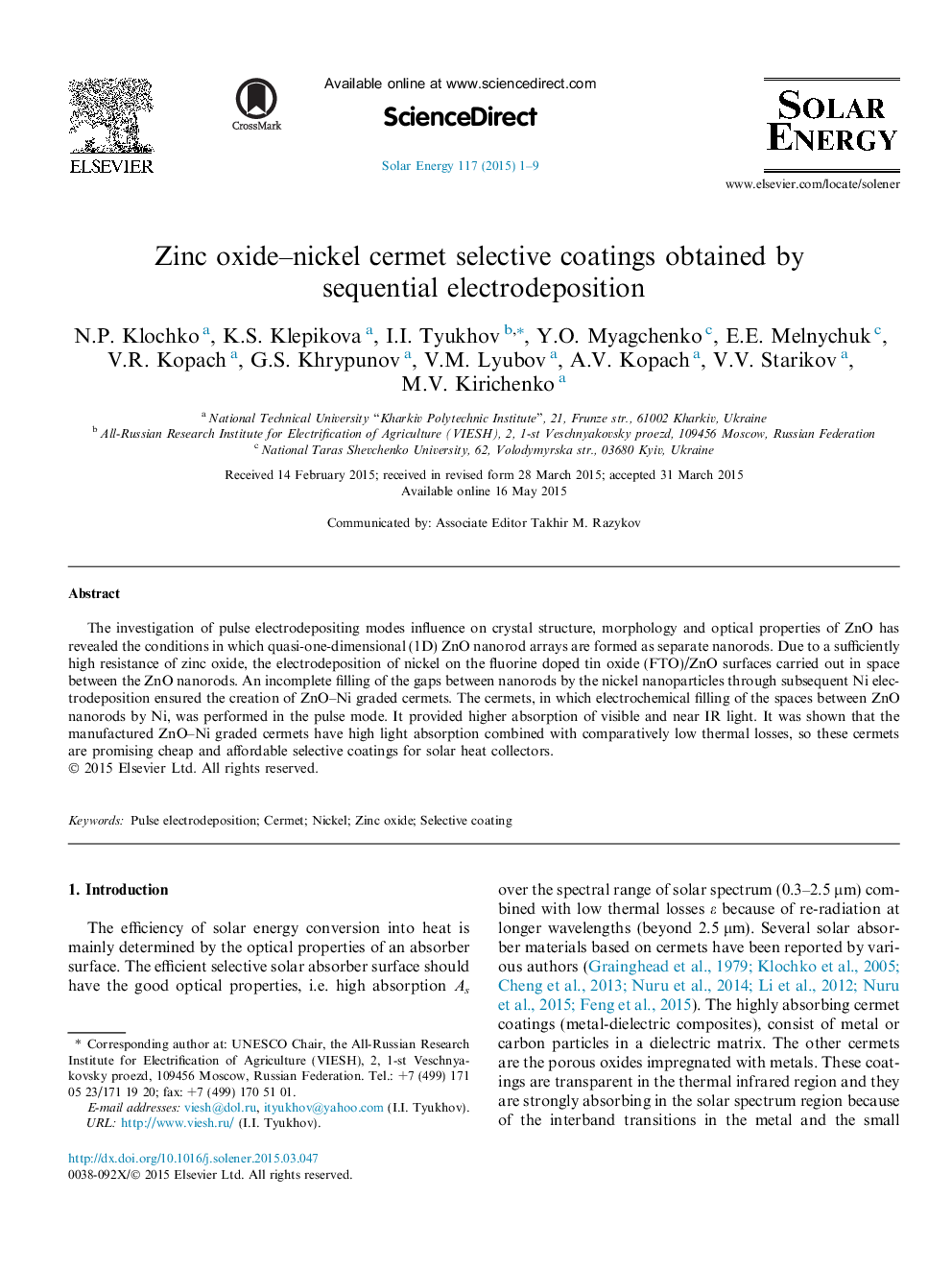| Article ID | Journal | Published Year | Pages | File Type |
|---|---|---|---|---|
| 1549679 | Solar Energy | 2015 | 9 Pages |
•ZnO–nickel cermet selective coatings obtained by sequential electrodeposition.•The pulse electrodeposition modes formed separate ZnO nanorods.•The electrodeposition of Ni was between ZnO nanorods due to its high resistance.•ZnO–nickel cermets with pulse plated Ni demonstrated higher visible absorption.•Obtained cermets are promising cheap and affordable solar selective coatings.
The investigation of pulse electrodepositing modes influence on crystal structure, morphology and optical properties of ZnO has revealed the conditions in which quasi-one-dimensional (1D) ZnO nanorod arrays are formed as separate nanorods. Due to a sufficiently high resistance of zinc oxide, the electrodeposition of nickel on the fluorine doped tin oxide (FTO)/ZnO surfaces carried out in space between the ZnO nanorods. An incomplete filling of the gaps between nanorods by the nickel nanoparticles through subsequent Ni electrodeposition ensured the creation of ZnO–Ni graded cermets. The cermets, in which electrochemical filling of the spaces between ZnO nanorods by Ni, was performed in the pulse mode. It provided higher absorption of visible and near IR light. It was shown that the manufactured ZnO–Ni graded cermets have high light absorption combined with comparatively low thermal losses, so these cermets are promising cheap and affordable selective coatings for solar heat collectors.
